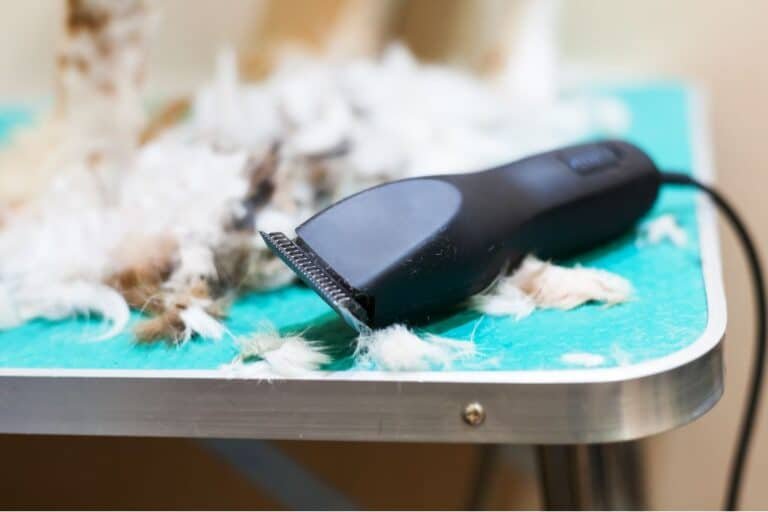7 best Cat Shampoo – Give Your Feline Friend the Spa Treatment They Deserve

Is your feline friend overdue for a luxurious and refreshing spa-like experience? Do you find yourself overwhelmed by the sheer number of cat shampoos available online? Look no further! We've taken the guesswork out of finding the best cat shampoo for your furry companion by researching and compiling our top picks.
In this article, we'll dive into the pros and cons of each shampoo and highlight their main benefits, ensuring that you can pamper your pet with confidence. From soothing oatmeal shampoos to convenient waterless options, we've got something to cater to every cat owner's needs.
Let's dive in and find the purr-fect shampoo for your cat!
We independently research, test, review, and recommend the best products— this post may contain affiliate links you can view our affiliate disclosure here
Our Top Picks For The Best Cat Shampoo
- Soothing Oatmeal Cat Shampoo
- TropiClean Deep Cleansing Shampoo
- Vet's Waterless Cat Shampoo
- John Paul Scented Cat Shampoo
- Hypoallergenic Sensitive Skin Cat Shampoo
- Pro Pet Moisturizing Cat Shampoo
- TropiClean Natural Ingredients Cat Shampoo
1. Soothing Oatmeal Cat Shampoo

The Oatmeal Shampoo is an excellent choice for cats with dry skin, as the natural ingredients work together to provide deep moisturization. Almond oil and oatmeal help soothe and nourish your cat's skin, making it a top pick for pets with skin conditions. It's safe to use on cats 12 weeks and older, and can also be used on dogs.
Pros:
- Contains natural ingredients, including almond oil and oatmeal
- Great for cats with dry skin
- Suitable for cats and dogs
Cons:
- Some cats may not like the scent
2. TropiClean Deep Cleansing Shampoo
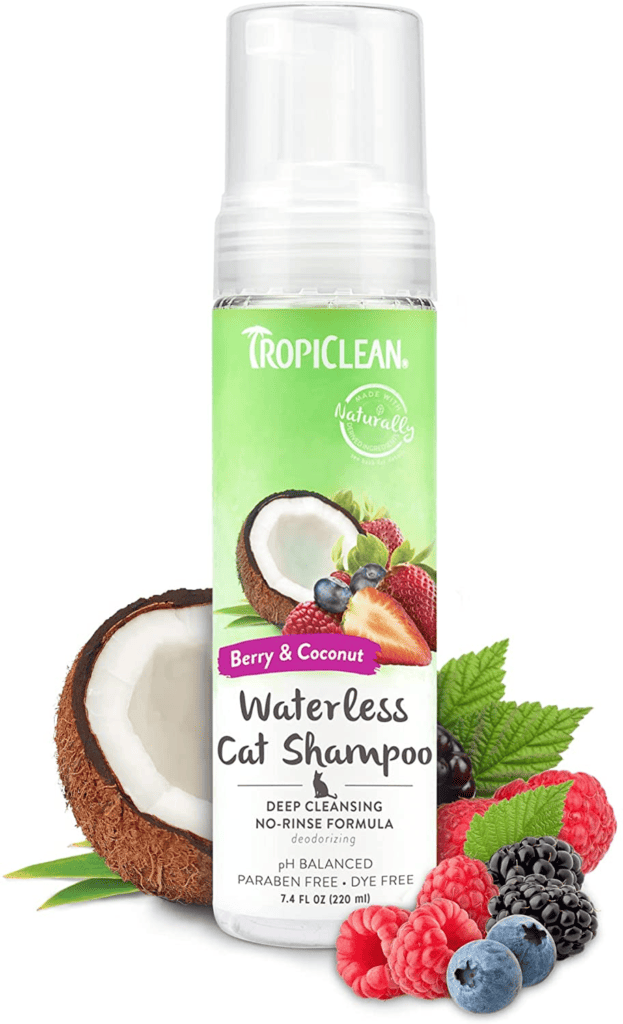
TropiClean Shampoo is a deep cleansing shampoo that effectively tackles fleas and ticks, making it an ideal option for cats and dogs that spend time outdoors. It's safe to use on cats 12 weeks and older, but be cautious if your cat has sensitive skin, as it may be too strong for them.
Pros:
- Deep cleansing shampoo
- Safe to use on cats and dogs
- Effective on fleas and ticks
Cons:
- May be too harsh for cats with sensitive skin
3. Vet's Waterless Cat Shampoo

Waterless Cat Shampoo is a fantastic alternative for cats that hate getting wet. This easy-to-apply shampoo requires no water, making it perfect for quick touch-ups between baths. It's safe to use on cats with skin conditions, but it may not be as effective as traditional shampoos for deep cleaning.
Pros:
- No need for water
- Suitable for cats with skin conditions
- Easy to apply
Cons:
- May not be as effective as traditional shampoos
4. John Paul Scented Cat Shampoo
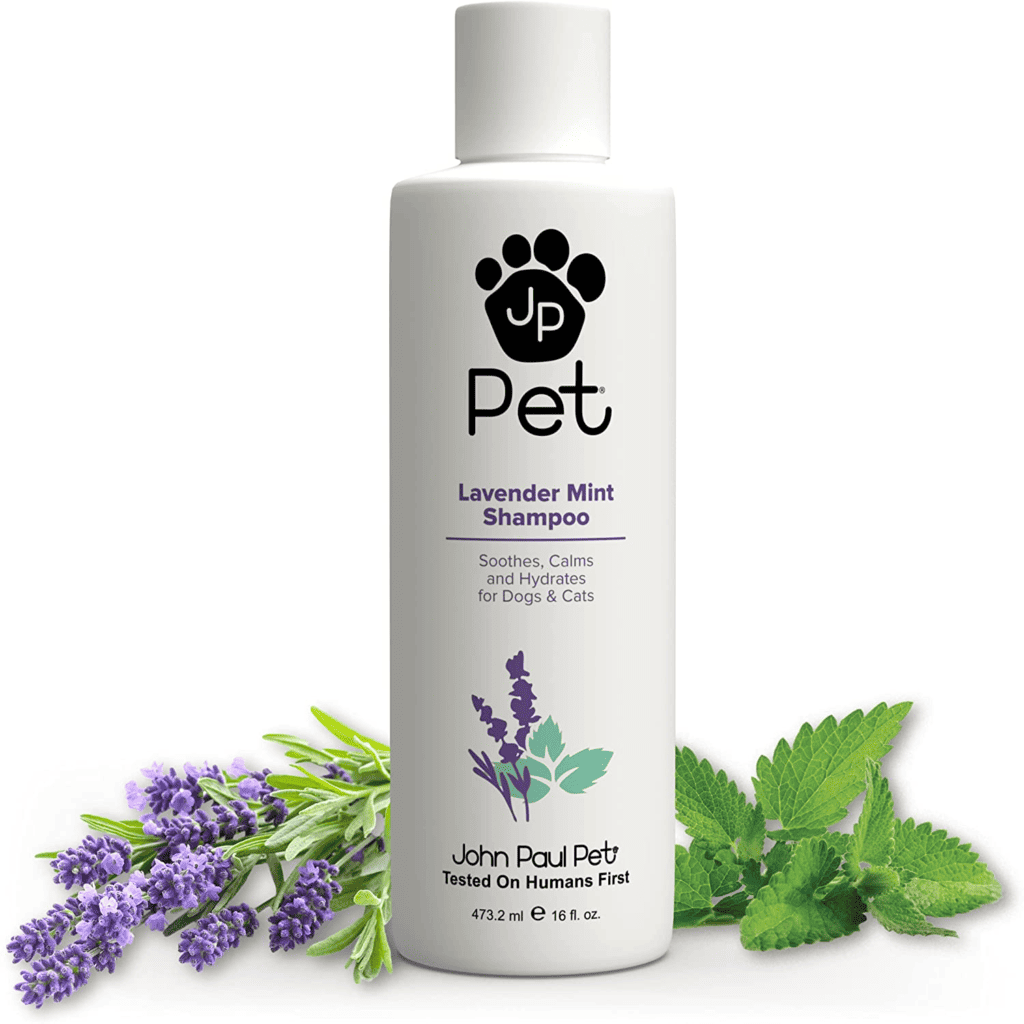
This Scented Cat Shampoo is perfect for pet owners who want their cats to smell delightful after a bath. It moisturizes your cat's skin, leaving it soft and healthy. This shampoo is safe to use on cats 12 weeks and older, but keep in mind that some cats may not appreciate the added fragrance.
Pros:
- Pleasant fragrance
- Moisturizes your cat's skin
- Suitable for cats 12 weeks and older
Cons:
- Some cats may not like the scent
5. Hypoallergenic Sensitive Skin Cat Shampoo

Hypoallergenic Sensitive Skin Cat Shampoo is a specially formulated shampoo designed to cater to the needs of cats with sensitive skin or allergies.
This gentle, fragrance-free formula helps to cleanse and nourish your cat's skin and coat without causing irritation or exacerbating existing skin issues.Enriched with soothing ingredients like aloe vera and chamomile, this shampoo provides a calming and refreshing bathing experience for your feline friend.
Its mild formulation makes it suitable for regular use, ensuring that your cat stays clean and comfortable without the worry of adverse reactions. If your cat is prone to skin irritations, Hypoallergenic Sensitive Skin Cat Shampoo is an ideal choice to keep them looking and feeling their best.
Pros:
- Hypoallergenic and fragrance-free to minimize the risk of irritation
- Gently cleanses and nourishes your cat's skin and coat
- Suitable for regular use on cats with skin sensitivities
Cons:
- May not be as effective against severe dirt or debris
- Could be more expensive than other cat shampoos
6. Pro Pet Moisturizing Cat Shampoo
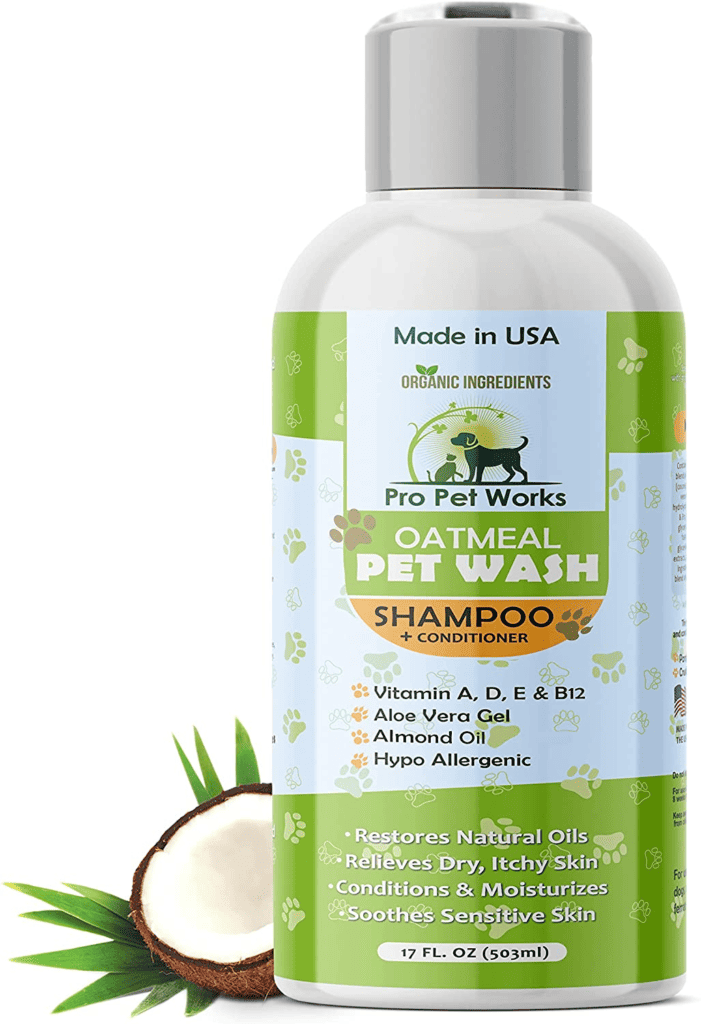
Pro Pet Moisturizing Cat Shampoo is a hydrating and nourishing shampoo designed to address dry skin and dandruff issues in cats. Enriched with natural almond oil, this shampoo works to moisturize and condition your cat's skin and coat, leaving them soft, shiny, and healthy. The gentle formula is suitable for both cats and dogs, making it a versatile choice for multi-pet households.
In addition to its moisturizing properties, this shampoo imparts a pleasant, mild scent that leaves your cat smelling fresh without overpowering their sensitive noses. While Almond Oil Moisturizing Cat Shampoo is excellent for addressing dry skin concerns, it may not be as effective against fleas and ticks, so consider using a separate flea and tick control product if necessary. Also, note that this shampoo may not be suitable for cats with nut allergies. Overall, this shampoo is an excellent choice for pet owners seeking to improve their cat's skin and coat health with a moisturizing and pleasantly scented product.
Pros:
- Infused with almond oil to moisturize and nourish your cat's skin and coat
- Helps relieve dry skin and dandruff
- Suitable for both cats and dogs
- Leaves a pleasant, mild scent
Cons:
- May not be ideal for cats with nut allergies
- Could be less effective against fleas and ticks
7. TropiClean Natural Ingredients Cat Shampoo
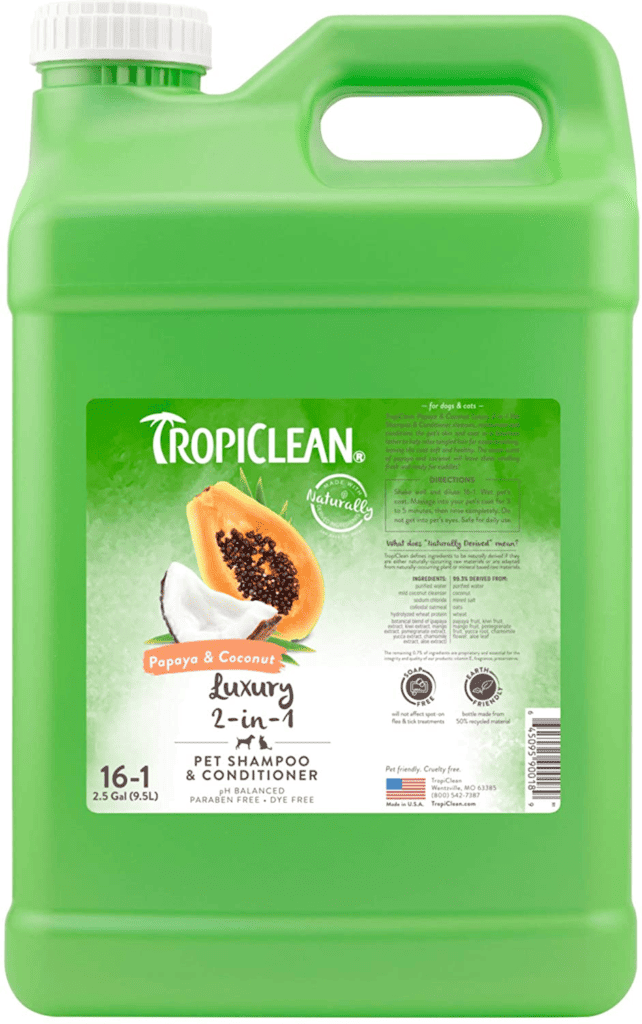
Tropi Clean Natural Ingredients Cat Shampoo is an excellent choice for pet owners who prefer a gentle, eco-friendly approach to bathing their cats. This shampoo is made with natural ingredients that are gentle on your cat's skin, making it ideal for pets with skin conditions. It's suitable for both cats and dogs, but it may not be as effective against fleas and ticks as other shampoos on this list.
Pros:
- Made with natural ingredients
- Gentle on your cat's skin
- Suitable for cats and dogs
Cons:
- May not be as effective against fleas and ticks as other options
How to Get Mats Out of Long-Haired Cats: A Comprehensive Guide
Matted fur is not only unsightly but can also cause discomfort and health issues for your long-haired cat. Removing mats is essential for maintaining your cat's overall health and well-being. In this guide, we'll cover the steps to safely and effectively get mats out of your cat's fur.
1. Preparation
Before you begin, gather the necessary supplies:
- A high-quality pet comb or brush (slicker brush recommended)
- A mat splitter or dematting comb
- A pair of round-tip grooming scissors
- Cat-friendly detangling spray (optional)
- Treats for rewarding your cat
Ensure you're working in a calm, quiet environment to minimize stress for your cat.
2. Gradual Introduction
Introduce your cat to the grooming tools by letting them sniff and explore the items. Offer treats and positive reinforcement to create a positive association with the grooming process.
3. Gentle Brushing
Begin by gently brushing your cat's fur with a comb or slicker brush to remove any loose hair and smaller tangles. Always brush in the direction of the hair growth, starting at the head and working towards the tail. Be gentle, especially around sensitive areas like the belly and hind legs.
4. Locate the Mats
After you've given your cat an initial brushing, identify the location and size of the mats. Mats commonly form behind the ears, under the legs, on the belly, and near the base of the tail.
5. Apply Detangling Spray (Optional)
If you have a cat-friendly detangling spray, apply it to the matted area to help loosen the tangled fur. Follow the instructions on the product label for best results.
6. Use a Mat Splitter or Dematting Comb
Carefully use a mat splitter or dematting comb to break apart the mats. Work slowly and gently, starting at the outer edge of the mat and gradually working your way inwards. Be mindful of your cat's skin to avoid accidentally nicking them.
7. Trim Mats if Necessary
If a mat is too dense or close to the skin, use round-tip grooming scissors to carefully trim the mat away. Make sure to keep a finger between the scissors and your cat's skin to prevent injury. Cut the mat in small sections, and then use a comb to remove the trimmed fur.
8. Reward Your Cat
Throughout the grooming process, offer treats and praise to keep your cat calm and reinforce positive behavior.
9. Maintenance
To prevent mats from forming in the future, establish a regular grooming routine. Brush your long-haired cat at least every other day, or even daily if possible, to keep their fur tangle-free and healthy.
By following these steps, you can effectively remove mats from your long-haired cat's fur and maintain their coat in pristine condition. Remember, always be patient and gentle during the grooming process to ensure a positive and stress-free experience for your beloved pet.
Buying Guide: 7 Best Cat Shampoo for Your Feline Friend
Selecting the best cat shampoo for your furry companion can be challenging, given the wide range of products available in the market. In this buying guide, we'll walk you through some essential factors to consider when purchasing a cat shampoo, making it easier to find the perfect match for your pet's needs.
1. Cat's Skin and Coat Condition
Evaluate your cat's skin and coat condition before choosing a shampoo. Different shampoos cater to various needs, such as:
- Sensitive skin: Opt for hypoallergenic, fragrance-free, or gentle formula shampoos designed specifically for cats with sensitive skin or allergies.
- Dry skin or dandruff: Look for shampoos containing moisturizing ingredients like oatmeal, aloe vera, or almond oil to soothe and hydrate your cat's skin.
- Fleas and ticks: Choose a shampoo with flea and tick control properties to help eliminate and prevent these parasites.
2. Ingredients
Always check the ingredients list to ensure the shampoo is safe and effective for your cat. Look for natural ingredients, such as essential oils, plant extracts, or mild surfactants, and avoid harsh chemicals, artificial fragrances, or colors that could cause irritation.
3. Age of Your Cat
Some shampoos are specifically formulated for kittens or adult cats. Make sure the shampoo you choose is safe to use on your cat based on their age. Many shampoos are suitable for cats 12 weeks and older, but always double-check the label.
4. Waterless or Traditional Shampoo
If your cat dislikes water or you need a quick solution for grooming, consider a waterless shampoo. These shampoos come in spray or foam form and don't require rinsing, making them convenient for spot cleaning or freshening up your cat between baths.
5. Scented or Unscented
Some cat shampoos come with added fragrance to make your cat smell pleasant after a bath. However, cats can be sensitive to strong scents, so you may want to opt for an unscented or mildly scented shampoo to prevent any discomfort.
6. Brand Reputation and Customer Reviews
Choose a reputable brand known for producing high-quality pet care products. Read customer reviews and testimonials to gain insights into the effectiveness and safety of a particular shampoo.
7. Price
While it's essential to consider the price, don't compromise on quality for the sake of a lower cost. Invest in a high-quality shampoo that meets your cat's needs and provides the best care for their skin and coat.
By considering these factors, you'll be better equipped to find the best cat shampoo for your feline companion. Remember, the health and comfort of your cat should always be the top priority when choosing grooming products.
Conclusion
In conclusion, whether your feline friend is a curious adventurer, a fluffy couch potato, or a diva with a taste for luxury, finding the purr-fect cat shampoo is the key to keeping them looking fabulous and feeling comfortable.
With this comprehensive guide, you're now equipped to tackle the great shampoo hunt like a pro. So go ahead, give your cat the spa treatment they deserve, and watch them strut their stuff with a renewed sense of confidence! And who knows, you might just find yourself feeling a little envious of your cat's luscious, well-groomed fur.
Happy bathing, and may the furr-ce be with you!
FAQ: Cat Shampoo and Grooming
How often should I bathe my cat?
Can I use human shampoo or baby shampoo on my cat?
What should I do if my cat has an adverse reaction to a shampoo?
How can I make the bathing process less stressful for my cat?
• Introduce your cat to water and the bathing area gradually.
• Use lukewarm water, and avoid getting water in your cat's ears, eyes, or nose.
• Speak to your cat in a calm, reassuring voice throughout the process.
• Offer treats and praise to create a positive association with bathing.
• Use a soft, absorbent towel to dry your cat gently.
Can I use dog shampoo on my cat?
Do I need to use a conditioner after shampooing my cat?
Also check out our other top post lists:


